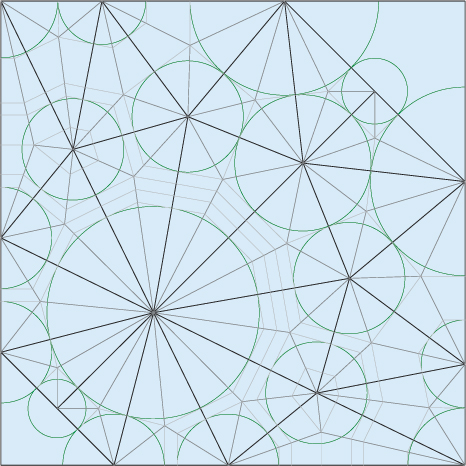 |
|
|||
|
Mathematical Paper Folding Exhibit - Introduction |
Mathematical
Paper Folding Exhibit |
|||
 |
||||
| Crease pattern for a model of an origami lobster, designed by Dr Robert Lang. | ||||
| “To
the paper folder, the square is the origin of all form. Where others
see only the void – dull, blank, meaningless – the folder
sees a world already overflowing with possibilities.” Traditional origami models, painstakingly developed by hand, have mostly been simple structures – stylistic sketches of animals and flowers, and pretty decorative boxes. Until very recently, origami was essentially a closed universe consisting of just a few hundred tried and true designs. Students learned from masters by watching first hand, while diagrams were rare, and closely guarded secrets. In the past twenty years, however, the ancient art of paper folding has been transformed by new ideas and techniques infused from the fields of mathematics, computer science, information theory and physics. This new “technical folding,” also known as origami sekkei, vastly expands the traditional repertoire, enabling construction of immensely complex forms that could not have been achieved by the old methods. In line with the practical evolution of ever more intricate forms, these new approaches have also given rise to a new breed of “computational origami” theorists who bring to bear on the blank sheet a raft of formal techniques, analyzing the potentialities inherent in this infinitely fecund form. |
||||
 |
||||
|
The above crease
pattern of the origami lobster folded from one uncut square of Korean
hanji paper |
||||
| [ next ] | ||||
| © 2003–2018 The Institute For Figuring | ||||